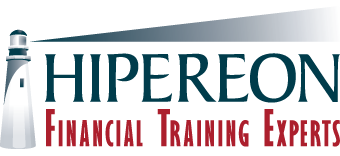Do Your People Need To Be Trained?
By Robert J. Hogan
In the world of business banking the two primary objections to training have remained constant over the years; it takes too long and it costs too much. Then there is the fear, that as soon as I get them trained they find a better job. From this professional’s viewpoint in today’s small business lending market, those attitudes are unsubstantiated and outdated. First, training or talent development needs to be viewed as an investment. An investment means for the expense you incur today, you are expecting long term sustainable returns in the future. A training investment means your institution is committed to developing its most precious asset, its People. It demonstrates your organization has recognized their worth; and is interested in making them more productive, and a more valuable asset to the institution and to themselves. It is common knowledge people who often view themselves as important to an organization are those the institution has made an investment in. From their perspective the institution has made a commitment to their development, to their future value, which they view as priceless.
Second, the question that needs to be asked is, “What’s the cost of not being properly prepared to do the job?” In business banking that could mean the loss of having to write off a non-performing loan, or simply the loss of not getting the business. If proper training prevents making one bad business loan, it could potentially save your institution thousands. For example; in today’s market writing off a typical small business loan of $225,000 (which results in a hit to your equity), with a net interest margin of 3.0%; requires the institution to find $7,500,000 in incremental assets to replace the equity. This represents the institution’s true cost of the write-off (225,000/.03 = 7,500,000). A cost which would typically pay for training the institution’s entire staff several times over.
I believe the third concern can be addressed by a famous American author, Zig Ziglar who stated, “The one thing worse than training people and losing them, is not training them and keeping them.” Think about the ramifications of that statement for a minute or two. That sentiment is never more profound than when you are discussing your institution’s staff responsible for lending to or providing services for the small business market.
Commercial lending takes people with experience, sound judgement and a solid educational background in diverse business subject matters. Good commercial bankers need to be versed in subjects ranging from; accounting basics, entity structures, financial statement analysis, risks assessment to cash flow determination. Commercial bankers need to be business model experts. We at Hipereon Inc. believe to be an expert; you need years of seasoned experience combined with proper business training/education. It generally starts with proper education/training.
The following skill assessment survey helps you evaluate your organization’s business banking training needs. Please complete the following survey questions to design a program that meets your organization’s specific skills development needs.
Skills Assessment For Commercial Bankers
How many lenders/staff members need to be trained?
What is your desired time frame, i.e. 2nd Qtr, etc?
What is your primary training objective?
Skills Assessment:
Individuals involved in commercial banking need to be very versed in the following subject matters. Identify topics where your business bankers or other staff members could use additional training. Ask yourself, “Does my staff have a solid understanding of, and are they conversant in each of the following subjects?”(check each subject matter you’d like additional training):
Basic Accounting
- Nine governing principles of accounting
- Cash vs Accrual comparison
- Four basic business transactions
- Cost-Volume-Profit Analysis
- Different Capital budgeting techniques
Financial Statement Analysis
- Income Statement construction analysis
- Balance Sheet construction analysis
- Cash Flow Statement construction analysis
- 14 critical financial relationship interpretation
- 5 Predominant Roadblocks to Profitability
- Performance deviation calculations
Financial Statement Analysis
How to analyze & identify risks for different industries:
- Service Companies
- Retail Companies
- Wholesale/Distribution Companies
- Manufacturing Companies
- Construction Companies
Financial Projections
- How to analyze income statement projection logic
- How to analyze balance sheet projection logic
- Discover meaning of financial gap
- Discover 9 critical cash determinants
- Discover the SAF law
- Learn to calculate sustainable growth rates
- Learn 6 growth management strategies
- Learn “Method B” cash flow
- Learn how to develop cash budgets
- Learn how to conduct cash sensitivity analysis
- Learn asset financing patterns – proper debt structure
Making Effective Sales Calls
- Learn business life cycle characteristics
- Identify effective probing questions
- Match needs with proper solutions
Credit Memorandum Preparation
- Debt Service Coverage
- Repayment sources, primary, secondary, tertiary
- Loan Covenant Discussion
- Examine Loan Doc/Loan file checklist
Additional Desired topics
Testing/Daily Quizzes desired
After completing the survey and identifying your staff’s strengths and weaknesses contact small business experts, like Hipereon Inc., to design a curriculum specific to your needs.

